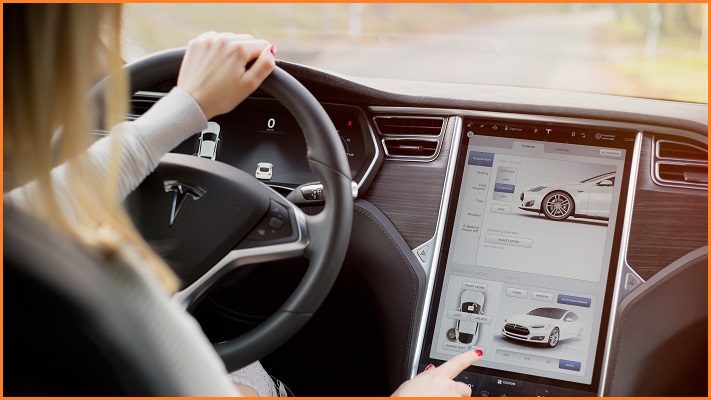Tesla has strenuously denied claims that a recent tragic accident in which two people died happened while no one was driving.
Speaking to investors at an earnings call on Monday, Tesla’s VP of vehicle engineering Lars Moravy read out a prepared statement in which he disputed any notion that the car was driverless at the time of the accident.
Moravy said the company was still helping with local law enforcement and national traffic authorities investigate the crash.
“What we’ve learned from that effort was that Autosteer did not and could not engage on the road conditions as it was designed,” Moravy said.
“Our adaptive cruise control only engaged when the driver was buckled and above five miles per hour and it only accelerated to 30 miles per hour in the distance before the car crashed.
“As well, adaptive cruise control disengaged so the car could come to a full stop when the driver’s seatbelt was unbuckled.”
Moravy said investigations showed all seatbelts post-crash were unbuckled and that there was evidence to suggest someone was in the driver’s seat when the crash occurred.
The accident saw the vehicle hit a tree at high speed and catch fire which took firefighters four hours to put out.
Shortly after the incident was reported on, Tesla CEO Elon Musk tried to discredit suggestions that autopilot was to blame, saying the company had recovered “data logs” which showed it did not have the vehicle's semi-autonomous Autopilot feature enabled.
Moravy, however, said Tesla could not fully access data from the crash.
“We were unable to recover the data from the SD card at the time of impact but the local authorities are trying to do that and we await their report,” he told investors.
During Monday’s earnings call, Musk said there had been “extremely deceptive media practices” with articles about the crash suggesting the vehicle’s Autopilot or Full Self Driving feature was to blame for the tragic crash.
“This was completely false,” he said. “Those journalists should be ashamed of themselves.”
Making profit and selling bitcoin
Prior to fending off criticism about the safety of its technology, Tesla posted its quarterly earnings boasting a US$438 million profit in the first three months of 2021.
The profit came off US$10.3 billion in revenue, US$9 billion of which was attributed to car sales and leasing.
Tesla has been profitable since late 2019 and celebrated its first annual profit at the start of this year.
Despite the good news, investors were initially displeased with Tesla’s results and its share price dipped nearly 2.5 per cent in after-hours trading.
As Tesla continues to expand its operations with two new factories set to open in Germany and Texas later this year, it has also looked to different ways of managing financial assets.
The company announced it bought $1.9 billion worth of bitcoin last year and began offering sales of its cars using cryptocurrency soon after.
On Monday’s earnings call, Tesla CFO Zach Kirkhorn said the company had already sold 10 per cent of its bitcoin holdings.
Kirkhorn explained how the company looked to bitcoin as a both a way of storing value and making some return while retaining liquidity.
“Bitcoin seemed at the time, and so far has proven to be, a good decision,” he said.
“A good place to place some of our cash that’s not immediately being used for daily operations, or maybe not needed until the end of the year, and get some return on that.
“Thinking about it from a corporate treasury perspective, we’ve been quite pleased with how much liquidity there is in the bitcoin market.”










